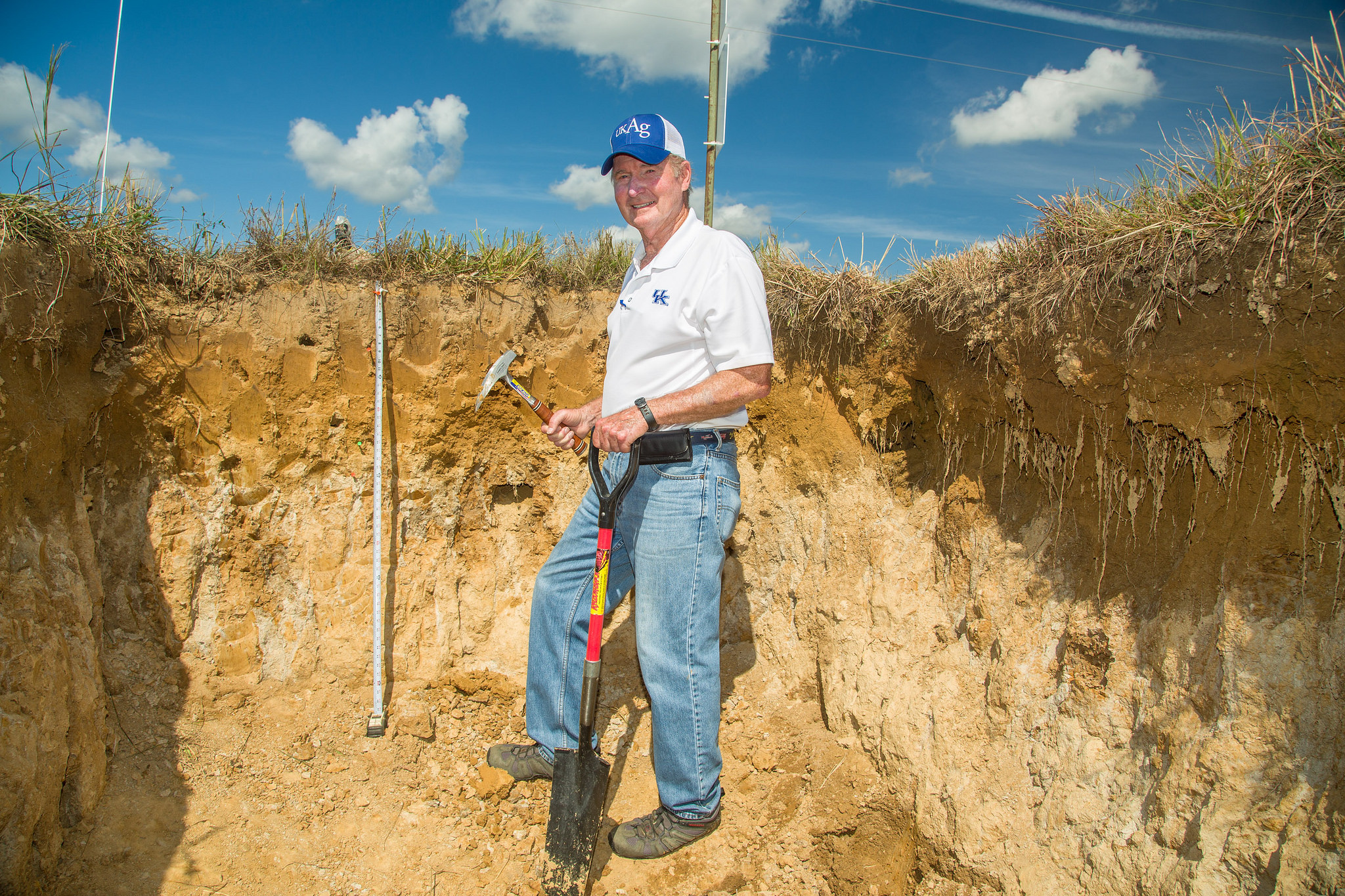Fragipan Field Day shows research breakthrough to farmers
Fragipan Field Day shows research breakthrough to farmers

To view the video, click here.
Row crop producers recently got a first look at the results of a groundbreaking University of Kentucky research project that should increase production on their farms and their bottom lines.
UK College of Agriculture, Food and Environment soil scientists Lloyd Murdock, Tasios Karathanasis, Chris Matocha and John Grove found that annual ryegrass broke down soil fragipan in laboratory, greenhouse and field studies during the past six years.
“I’m more excited about this research than any other project I’ve worked on in my 45 years at UK, because it can help so many people,” Murdock said. “It is something that farmers can work into their operations now to increase their yields.”
Fragipan is a cement-like layer in the soil that creates shallow soils with limited yield potential due to low water-holding capacity. Soil fragipans are in 50 million acres across the nation, including 2.7 million in Kentucky. Kentucky soil fragipans are in some of the largest crop production areas of the state.
“When we found that annual ryegrass broke down the fragipan, I liken it to the feeling that earlier UK researchers must have felt when they started no-till agriculture research,” Karathanasis said. “It was just amazing, especially when I learned about the economic benefits it could bring to producers.”
During a recent Fragipan Field Day at UK’s Research and Education Center farm in Princeton, participants heard about the laboratory discovery and saw a fragipan layer in the soil. They also learned about yield increase potential from annual ryegrass, ways to incorporate and control it and had their questions answered by project researchers, other specialists from the college, industry representatives and producers already growing annual ryegrass on their fragipan soils.
Illinois farmer Junior Upton and the late Mike Plummer, University of Illinois soil scientist, first got the inkling that annual ryegrass might be doing something to Upton’s soil after he began noticing annual ryegrass’ deep roots in his field. The corn that followed it yielded better than in other fields. The UK team later confirmed this rotation was lowering the fragipan depth on his farm. Upton shared his story at the field day.
“Everything happened by accident,” Upton said. “When I started, I only had about 5 inches of topsoil before I would hit the fragipan. I was trying to get through dry weather. I got a grant and started studying no-till and cover crops. Then a representative of Oregon Ryegrass asked me to try annual ryegrass as a cover crop.”
Dave Fischer is a beef producer from Indiana who has planted annual ryegrass on fragipans soils on his farm for the past eight years. Murdock visited Fischer’s farm and found that he had lowered the fragipan depth by 14 inches and had annual ryegrass roots 29 inches deep.
“It floored me, but at the same time, I had noticed that these fields seemed to not dry out as fast compared to what they used to and to neighboring fields. We were hanging in there a lot longer during drought periods,” Fischer said. “I would plant it just because of the forage, but the addition of breaking up the fragipan has just been super.”
UK researchers are currently developing an extension publication on the research breakthrough.
Events Extension Research


